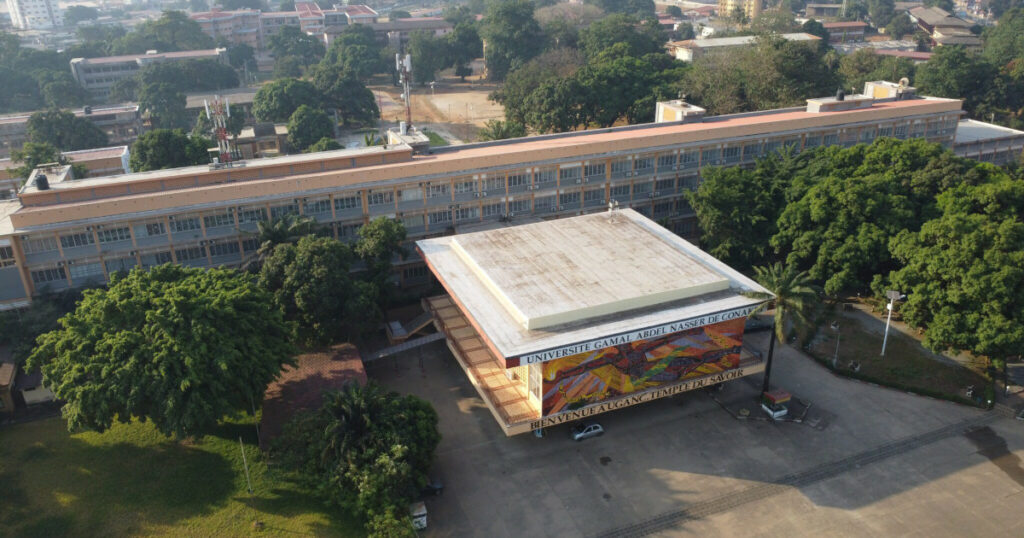The director of the National Institute for Theoretical and Computational Sciences in South-Africa tells about the goals and activities of this recently created organization
First, the basics: The National Institute for Theoretical and Computational Sciences (NITheCS) in South Africa was formally launched on April 1, 2024, and was built on the foundation of its predecessor, the National Institute for Theoretical Physics (NITheP). It serves as a Centre of Excellence under the National Research Foundation (NRF), an entity of the Department of Science, Technology and Innovation of South Africa.
The NITheCS Consortium comprises 26 South African universities and the African Institute for Mathematical Sciences (AIMS). While the headquarters of NITheCS resides at Stellenbosch University, the institute also has five coordinating nodes at Nelson Mandela University, North-West University, the University of Cape Town, the University of KwaZulu-Natal, and the University of the Witwatersrand. NITheCS is funded by the Department of Science, Technology and Innovation (DSTI) through the National Research Foundation (NRF). The NITheCS executive management committee is supported by a scientific advisory board.
Theoretical and computational sciences
Now, let me expand on our aims and approaches. The fast pace of development in virtually all areas of human activity demands collaboration and mutual support as backbones of scientific progress. The tentacles of science stretch around the globe – therefore, the overarching aim of the NITheCS is to be a leading African institute for theoretical and computational sciences. Its mission is to position South Africa at the forefront of global technological advancements while building competencies for the future through research, training, and engagement across eight scientific disciplines:
- astronomy and astrophysics;
- bioinformatics and quantitative biology;
- data science;
- earth systems and climate change modeling;
- mathematics;
- quantitative finance;
- statistics;
- theoretical physics.
A host of events
Our programs and events reflect our approach as a multidisciplinary and multi-themed institute that thrives on collaboration. We organize an abundant number of scientific activities throughout the year and offer a bursary scheme for postgraduate studies. We are particularly proud of our network of 20 Institutional Associates and more than 300 Individual Associates, all who hold PhDs and are instrumental in many of our activities.
Among others, they conduct research under specific research focus areas, while sharing knowledge and insights through colloquiums, mini- schools, micro-schools, and other events. Associates make vital contributions in terms of collaborative work, mentoring students, and conducting outreach activities. Most of our events are presented both online and in person, which are also recorded and published on the NITheCS YouTube channel. This creates an accessible repository of knowledge for both local and global communities.
Still in line with our overall approach, many of our events are co-hosted by organizations whose activities align with ours, such as collaborating with the Centre for High-Performance Computing (CHPC) for the annual CHPC & NITheCS Coding Summer School.
No more separate disciplines
Importantly, I am a proponent of the concept of ‘pan-disciplinarity.’ While the interdisciplinary and transdisciplinary approaches promote collaboration between different fields, they still operate within the framework of distinct disciplines. Pan-disciplinarity, on the other hand, dissolves these boundaries entirely because it views science not as a collection of separate disciplines, but as a unified whole, with the most pressing scientific and societal issues at its core.
NITheCS, therefore, champions open science as a core principle. We promote the inclusive sharing and accessibility of scientific knowledge that enables global collaboration and broad societal engagement in scientific processes. We are committed to enhancing transparency, fostering innovation, and ensuring that research benefits both science and society.
Backing the work already being done today
The importance of this approach of inclusiveness, pan-disciplinarity, collaboration, and open science becomes particularly evident during the International Year of Quantum Science and Technology (IYQ) that is celebrated in 2025, as multiple disciplines share an interest in the current and future importance of this scientific topic. Our approach also addresses, for instance, the Sustainable Development Goals of the United Nations – something that requires the extraordinary efforts and cooperation of scientists, in conjunction with other influential groups from all over the world. Just recently, the year 2024 marked the 60th anniversary of the International Centre for Theoretical Physics (ICTP), with whom NITheCS has a formal memorandum of agreement supporting joint research, education, and visiting opportunities between the two bodies.
We communicate regularly with the NITheCS community through our website, newsletters, social media, and e-mail notices, while increasing these activities where needed and possible.
Currently, NITheCS remains in a period of strategic growth and consolidation, but our focus remains on strengthening our institute through operational excellence, robust governance, and expanded collaboration. We believe this will ensure that we maintain a thriving and sustainable network that allows all voices in our community to be heard, and pan-directional collaboration in science and research to flourish. By supporting local scientists and researchers, we are not only laying foundations for the science and technologies of tomorrow, but providing practical backing for the work already being done today.
Francesco Petruccione, National Institute for Theoretical and Computational Sciences, South Africa
This article has been published by the African Physics Newsletter in April 2025. It is reproduced with the authorization of the American Physical Society.




